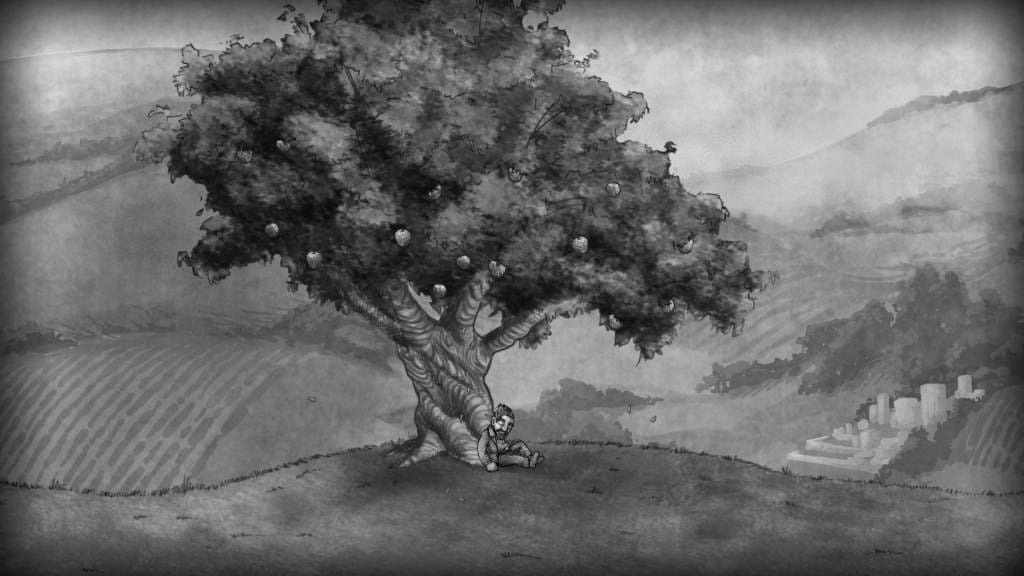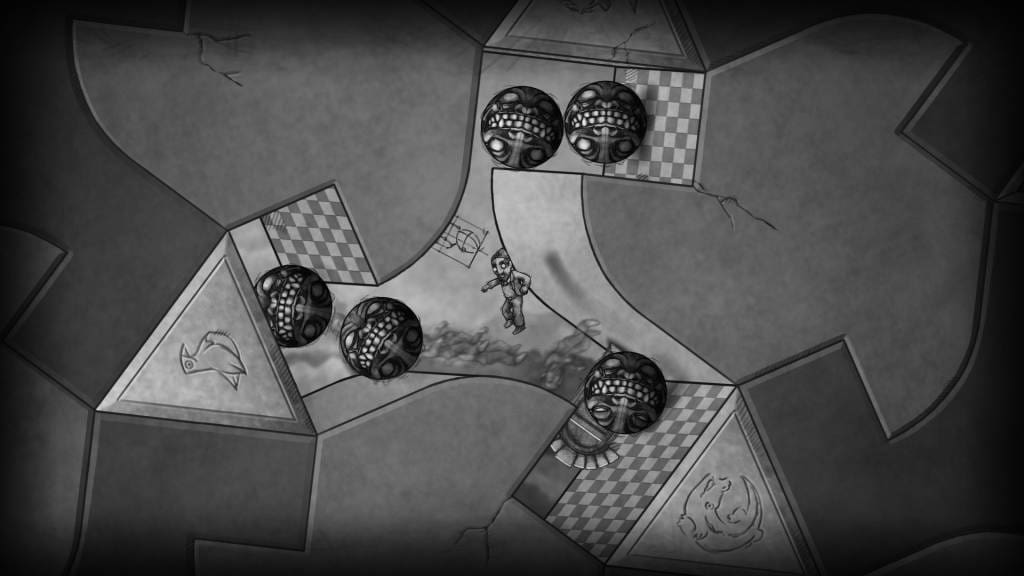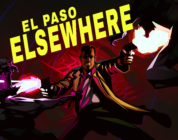The Bridge has a different take on the Puzzle Game genre than what I am used to. In a black and white world in the same vein as an M.C. Escher painting. It’s a very interesting concept, as the ceiling you were just standing on has now become the floor that you are sliding down on your way to the wall. That might not make much sense now, but it will after you spend some time with The Bridge.
There is an amazing art-style, everything looks both hand drawn and hand-animated with a very nice pencil and paper aesthetic. You start out on a hill in a field and make your way to a house. This beginning walk will set the tone for how you play the game. Walking. Such a slow walk. The slow character movement makes the controls feel sluggish. Your left and right triggers rotate the game world, not your character, and it makes for an interesting mechanic. The Bridge is made up of rooms in your house, with each room of the main house acting as a game world, and each game world containing more rooms that contain the world’s levels. You will need to continue early levels to progress, which starts out rather simple, but the difficulty starts picking up.
Some of you will recognize a few common staples of platform games, such as the unpleasant crushing obstacles, portrayed in The Bridge by enraging balls of death. At times they are chained to walls and follow regular gravity down, we’ll get into gravity later, and sometimes they just roll around according to the changes you are making to the world’s rotation. These balls-of-death don’t take much to get rolling, and the simplest, slowest of touches will reward you with instantaneous death.
There are other ways to die in The Bridge, one of the more aggravating deaths come from sliding off of a level due to our protagonist beginning to slide instead of walk on any but the flattest of surfaces. A 10 degree angle to the ground is cause for arm-windmills and sliding. If you couple this with the slow gravity rotation speeds in some levels, then you’re left with some challenges that seem more like their difficulty was artificially inflated by the controls than it was by clever level design and deaths that, at times, feel completely unfair. If you lose a key, for instance, you are dead. Keys react to gravity the same as your character, they seem to take a higher ground angle to slide, so your character will at times not be able to walk up an incline to grab the key that is just sitting there.
The Bridge doesn’t take death too seriously, though. A rewind mechanic, a-la Braid, will have you holding the B button for a few seconds to get back to a spot before you set into motion the events that resulted in your untimely, if non-permanent, death. You will use the B button. You will use it very often.
Later levels introduce new puzzle mechanics such as the vortex, which will lock in whatever objects fall into them, including you and the previously mentioned balls-of-death, as well as an opposite version of your character for whom up is down, left is right, and gravity is reversed. Welcome to where the game starts getting really interesting. Managing gravity for multiple items and characters where the very foundations of those laws are opposite, and equal, is an amazingly interesting concept. When you reach what I am going to call “gravity wells” you now have to keep track of multiple versions of gravity while being able to influence them without worrying about your gravity causing your character to fall to his death.
Sound is nothing bad, but it’s not something that most people will find themselves remembering, just slightly generic scrapes, clicks and knocks. The music is on the low-energy side, but I found that it worked well to counteract my annoyance that I had to rewind time for the umpteenth time because I slid off of a world.
While not broken, The Bridge feels like it was aspiring to be so much more, and just missed it. If you are looking for a puzzler that will make you keep your brain working, then The Bridge might just be for you, if you can look past its shortcomings.








